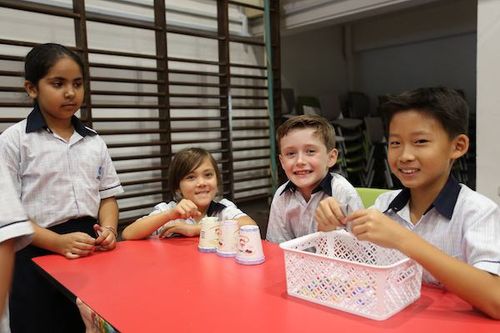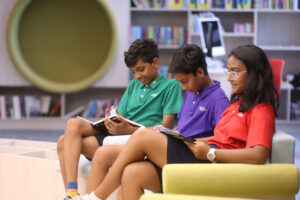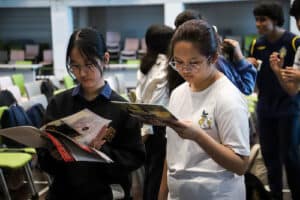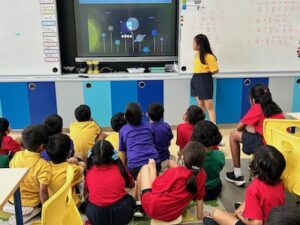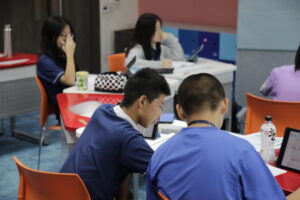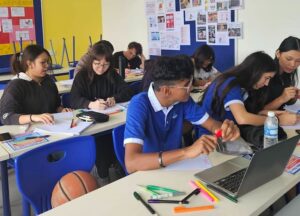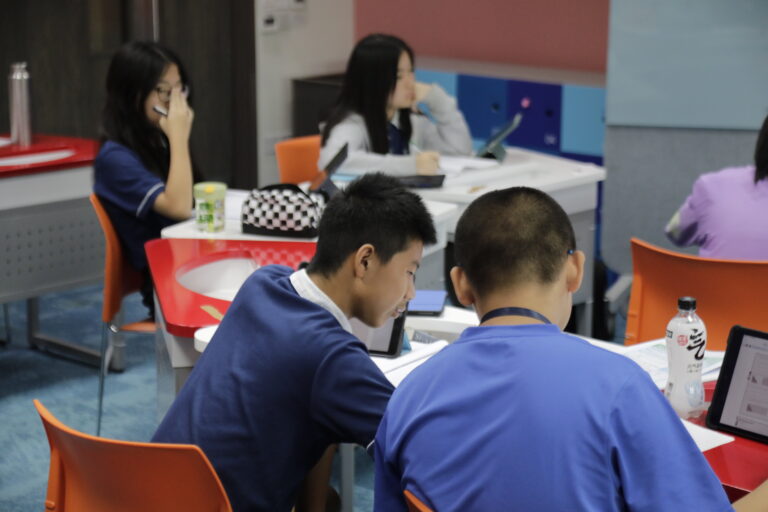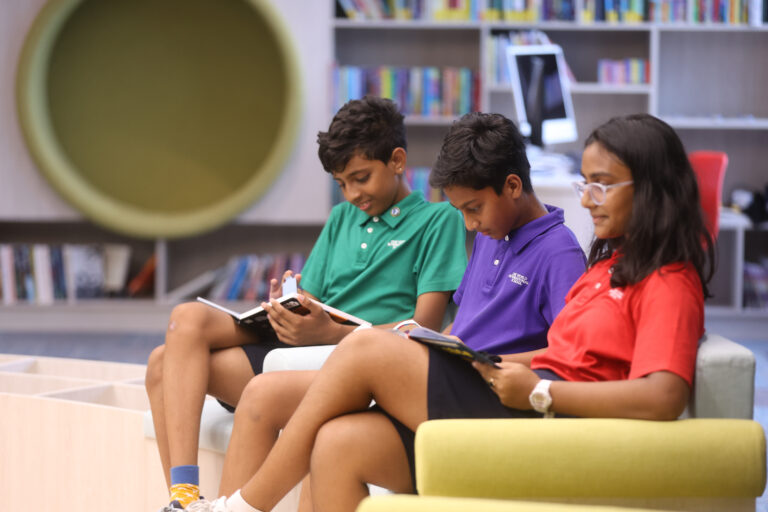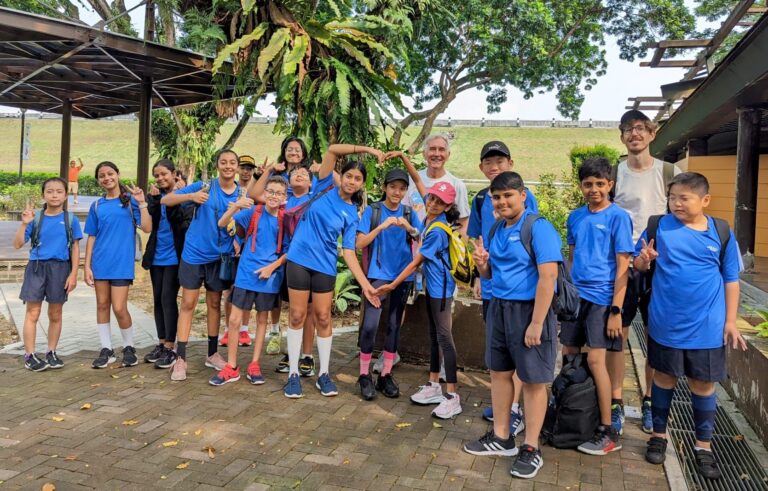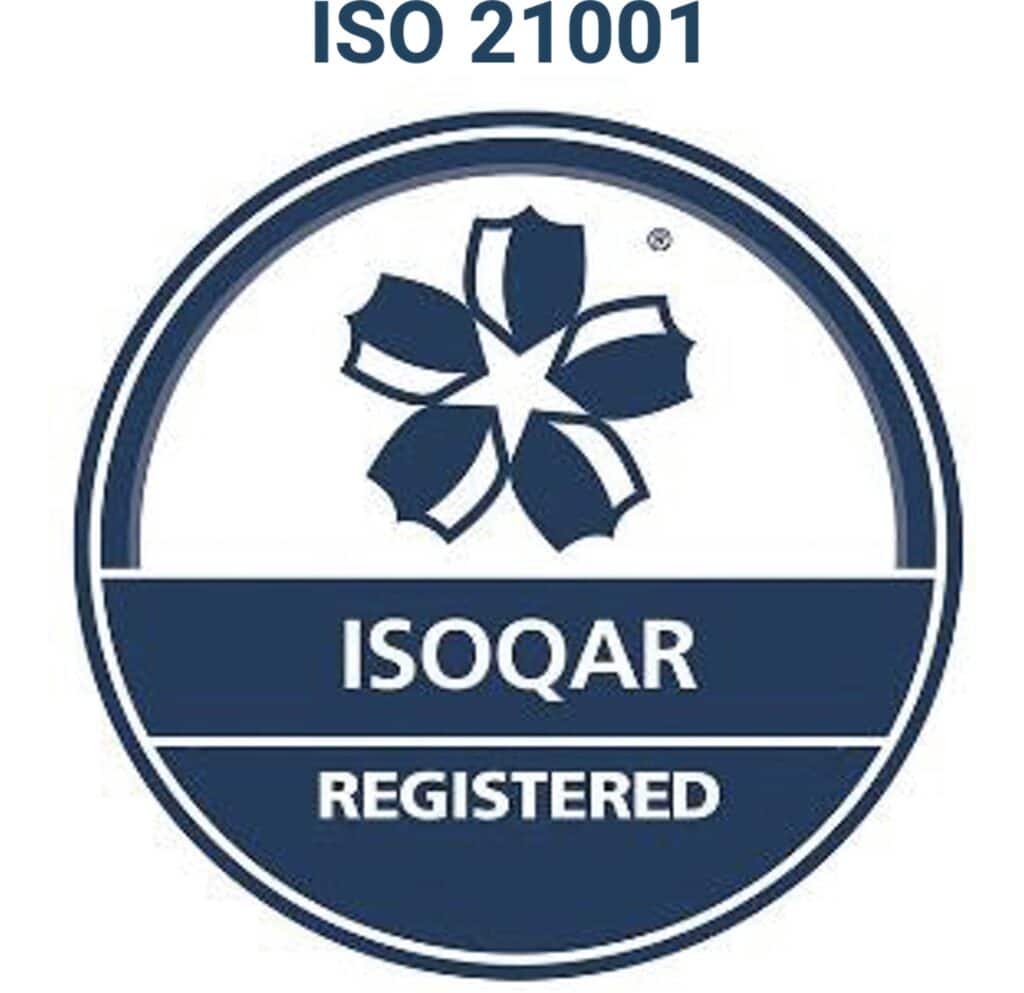At One World International School, our teachers and administrators believe in the power of partnership. We have found that students, teachers, and the entire school community thrive when we all work together, which is why we have made an effort to create collaborative learning spaces at our schools. The new OWIS Suntec campus will feature innovative, collaborative learning spaces designed to create an engaging and interactive experience for all learners.
Why is Collaborative Learning Important for Young Learners
Collaborative learning is a group learning experience in which students can discuss a topic, offer their own ideas, and develop solutions together as they learn about a new concept. For instance, in a primary school classroom, students can collaborate as pairs (Think-Pair-Share) or work in small groups to complete an assignment (such as analysing a topic in a transdisciplinary theme).

- They begin to learn how to communicate with others effectively, and they start to develop their critical thinking skills. By giving young learners the opportunity to share their ideas and discuss them with their peers, we are helping them build their confidence and develop communication skills.
- Students feel more comfortable sharing their thoughts and ideas with their teachers, which helps them form bonds within their school community. It is important that students feel safe and secure with their instructors, and collaborative learning makes the process of talking to the adult in their classroom much less intimidating.
- In a collaborative learning environment, students are more invested in their own learning experience. They feel valued and respected in the classroom, and they are self-motivated to continue working and doing their best.
- Cooperative learning exposes students to different thoughts, ideas, perspectives and backgrounds. This helps them begin to appreciate that each individual has their own experiences and that their culture and background may play an essential role in their ideas. Students who are exposed to different perspectives from a young age grow up to appreciate the beauty of diversity, and they thrive in multicultural environments.
- Group work gives students hands-on experience in different types of social experiences. By socialising and interacting with their peers, young learners become more prepared to adapt and thrive in the various situations they will face as adults.
Creating Collaborative Learning Spaces in Schools
At OWIS, our student-focussed and inquiry-based curriculum and experienced educators are primed to encourage collaboration in the classroom. And then, there is the learning environment itself as the third prong for successful outcomes in this type of learning. A few typical areas that can be transformed into collaborative learning spaces include:
- Common areas: Discovery zones can be created in common spaces between classrooms, and benches can be added to hallways so that students can converse, discuss and engage with one another.
- Corners: Spacious corners can be transformed into “breakout spaces” where learners can use their combined thought processes to arrive at an outcome for a task set for them.
- Classrooms: Open-concept classrooms can include flexible seating arrangements that allow students to personalise their learning experience throughout the day.
OWIS Suntec Classrooms Will be Ideal for Collaborative Learning
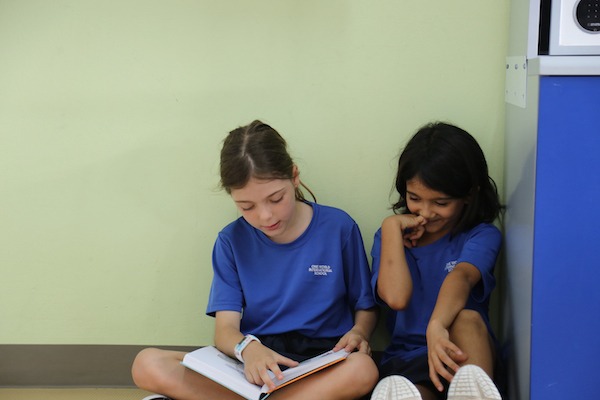
Located in the heart of Singapore, the OWIS Suntec campus has been designed with collaborative learning in mind, so that the school is always abuzz with discussions and conversations. Some of the design features we have built in are:
- Open-concept classrooms with thoughtful seating arrangements. Desks will be arranged in small groups that encourage organic discussion and collaboration.
- Flexible classroom configurations that allow teachers to walk around to facilitate discussions from within the classroom, not from the front of it. Our teachers are going to move about the classroom as they guide students through the lessons and conversations the inquiry-led themes will spark. They will also reconfigure layouts, such as move the chairs for a whole group activity, as needed.
- Specialised learning zones that provide students with a unique experience. Our OWIS Suntec campus will have an outdoor learning area in the sky garden and dedicated spaces for art, music and physical education, all of which will encourage socialisation.
- Our discovery zones are worthy of a special mention. Equipped with sensory materials, manipulatives, games and so on, these areas will offer a springboard to spark the imagination of our learners and draw them into collaborative activities as well.
Collaborative learning is not only an exciting and engaging experience for primary school students, but it also helps prepare them for the future. Collaboration and communication are critical 21st-century skills that all students will need in order to thrive in a global economy.
For more information about collaborative learning at the new OWIS Suntec Campus, attend our virtual open house today.
This blog was originally written in collaboration with Mark Renie, former Head of School, OWIS Nanyang and Suntec.
